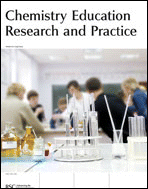A novel course of chemistry as a scientific discipline: how do prospective teachers perceive nature of chemistry through visits to research groups?
Abstract
To achieve sufficient pedagogical content knowledge on nature of chemistry related issues, teachers need structured opportunities for reflection and discussion. One way to provide those opportunities is through teacher-scientist interaction. This study is based on reflective essays of thirty prospective teachers who participated in a new course about the nature of chemistry and its implications for teaching, organized by the Chemistry Teacher Education Unit in the Department of Chemistry. As a part of the course, prospective teachers visited various research groups, discussed chemical research with the researchers, and wrote reflective essays about their experiences. The nature of chemistry related issues the students perceived when participating in teacher-scientist interaction during these visits were identified from their essays by qualitative content analysis. According to this analysis, students made observations about i) chemical research as an inquiry, ii) the collaborative nature of chemical research, and iii) the relationship of chemical research and society. The visit provided prospective teachers with opportunities for reflection on several ideas-about-science central to understanding the nature of chemistry. However, teacher-scientist interaction and research group visits are not an all-inclusive context for teaching nature of science related issues in chemistry. For some issues, a historical approach or the discussion and critical evaluation of the scientific arguments seemed to be more fruitful ways of approaching the topics.
- This article is part of the themed collection: Chemistry Teacher Education – Recent Developments

 Please wait while we load your content...
Please wait while we load your content...